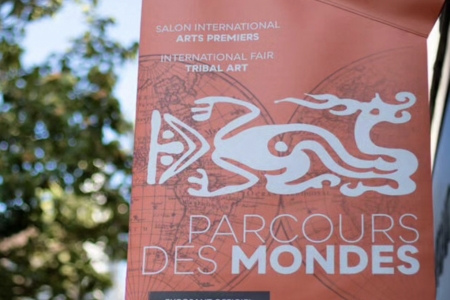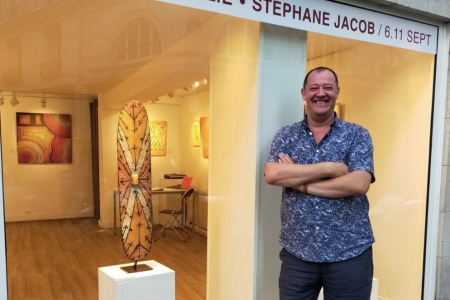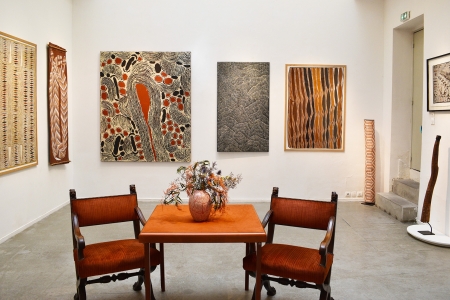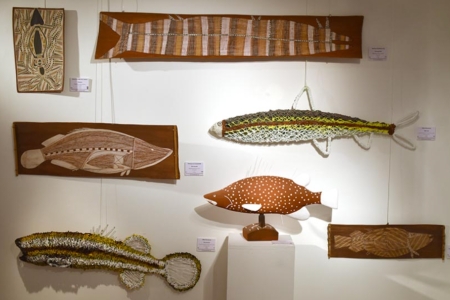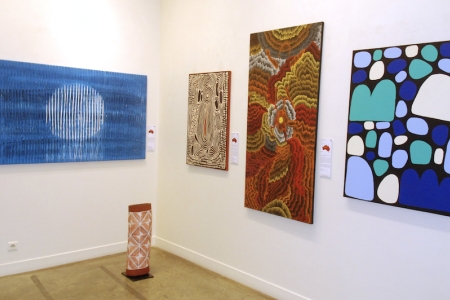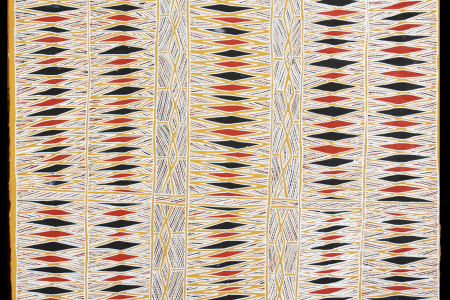
Ganiny
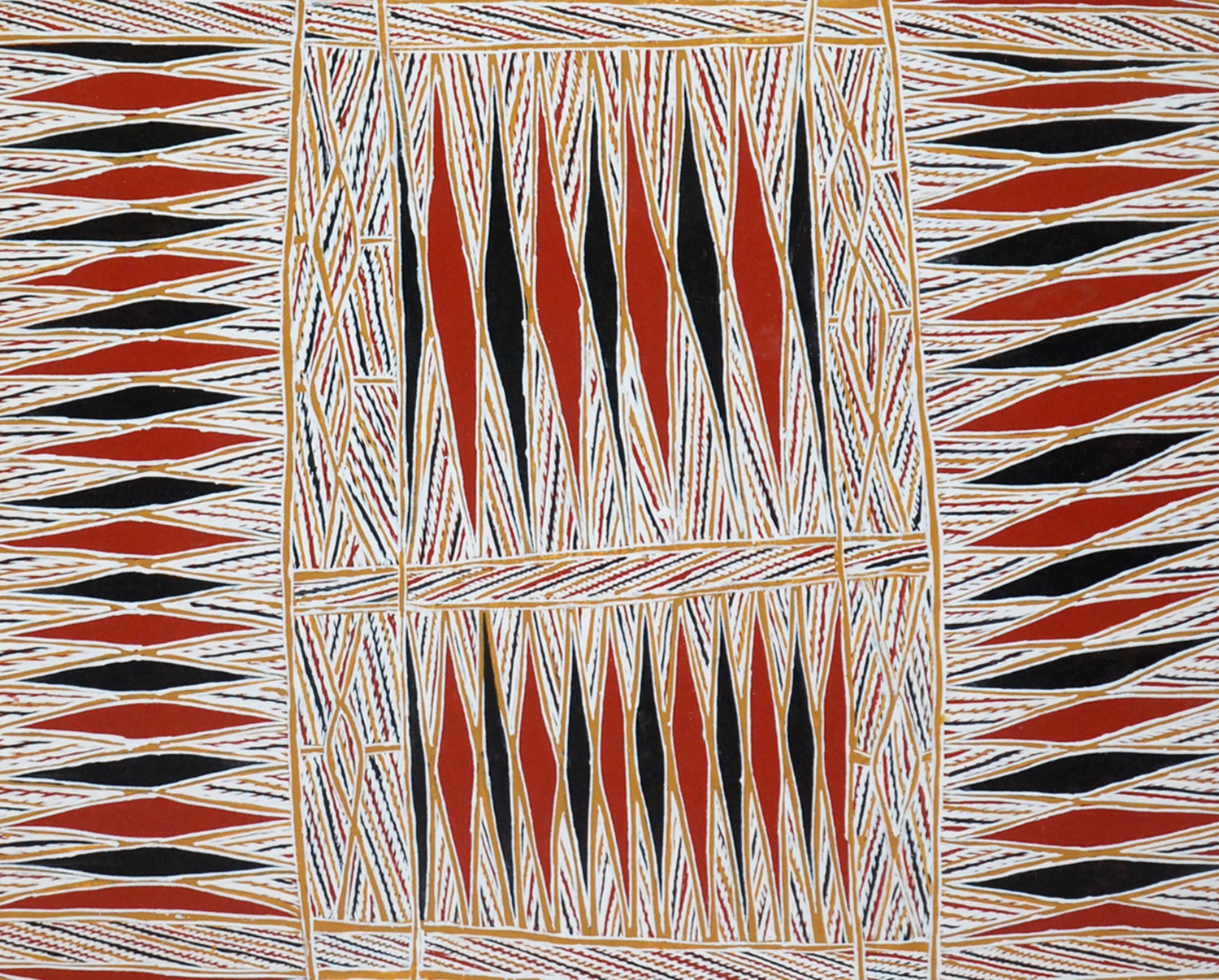
Charlie Matjuwi Burarrwanga belongs to a community living off the coast of eastern Arnhem Land (northern coast of Australia) on Elcho Island, and claims to be part of the Yolngu culture - literally Men in the region's Aboriginal dialect - dominated, from a religious point of view, by the dual figure of primordial fire and the Crocodile Ancestor.
While the crocodile is represented figuratively on many of the painted barks of Arnhem Land, particularly in the West, at Elcho, this totemic animal is evoked only by ritual geometric motifs inspired by the paintings with which the Aborigines adorn their bodies during ceremonies in honor of the ancestral crocodile. The artist respects this tradition by transposing the abstract forms of these body paintings onto paper. Similarly, fire is symbolized by the black and red diamonds representing glowing charcoal. Ceremonies in honor of these divinities involve the use of a ganiny, or knife for debarking the trunks of a variety of eucalyptus, the paper bark tree. Here, it is represented by the oblong shape with white upper tip, which divides the space of the work into two parts corresponding to the family structures of the Yolngu clans.
The beauty of this important work on paper lies in the painter's mastery of combining the various graphic systems associated with the Crocodile, Fire and Ganiny to create a kind of mystical cartography of Elcho Island, all geometric balance and harmony.
Collections Publiques: •Flinders University Art Museum, Adelaide, Australie •Musée Ethnographique, Basel, Suisse •Museum and Art Gallery of the Northern Territory, Darwin, Australie •National Gallery of Australia, Canberra, Australie •National Gallery of Victoria, Melbourne, Australie
